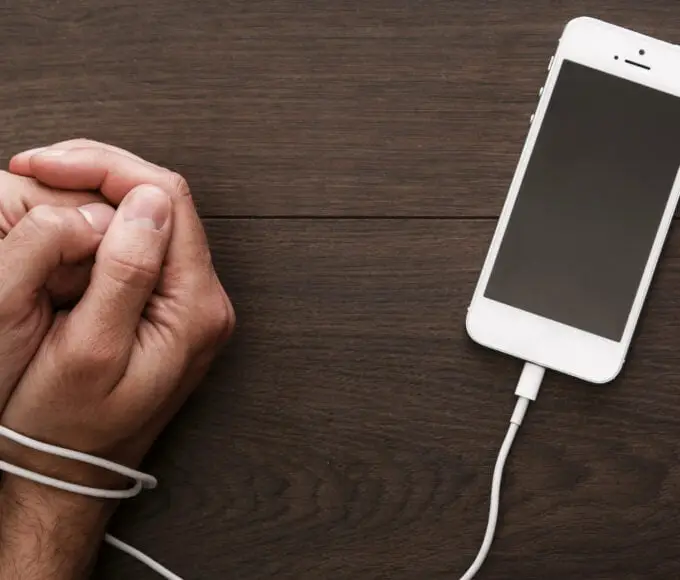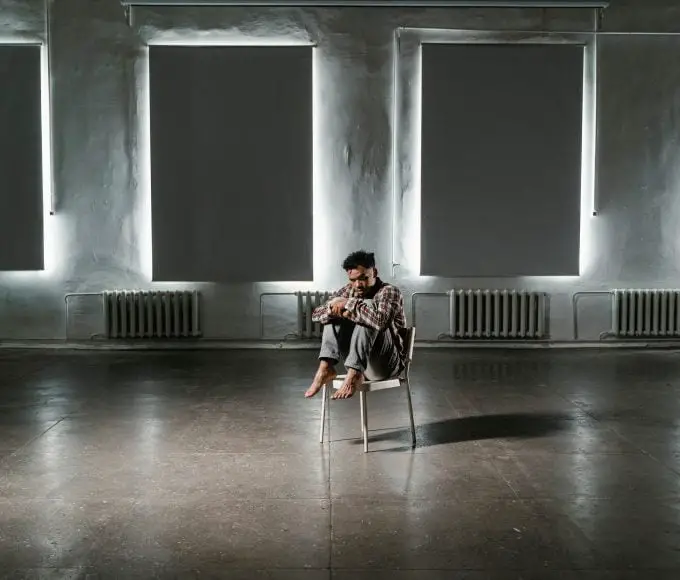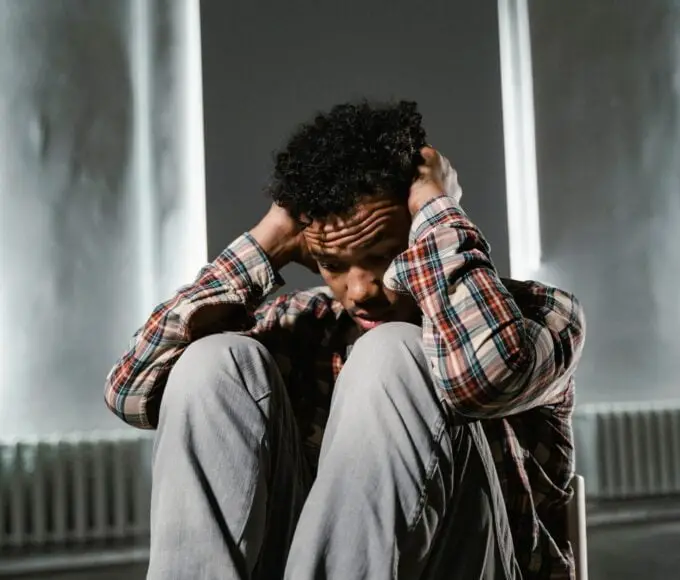Abstract: Anthropophobia, also known as social anxiety disorder, is a psychological condition characterized by fear and anxiety in social situations. People with this condition may feel embarrassed or self-conscious in front of others, leading to avoidance of social situations. This blog post aims to provide an in-depth discussion of anthropophobia, its causes, symptoms, and treatment options.
What is Anthropophobia
Anthropophobia is a common psychological disorder that affects millions of people worldwide. It is a type of anxiety disorder that causes intense fear and anxiety in social situations. People with anthropophobia may avoid social situations or experience significant distress when in social situations. This blog post aims to provide a detailed discussion of anthropophobia, including its causes, symptoms, and treatment options.
Causes of Anthropophobia
Genetics
- Family history: People with a family history of anxiety disorders, including social anxiety disorder, are more likely to develop anthropophobia.
- Genetic predisposition: Genetic factors can contribute to the development of anthropophobia, as certain genes may make a person more susceptible to anxiety and fear.
- Neurobiological factors: Neurobiological factors, such as imbalances in neurotransmitters like serotonin and dopamine, can also play a role in the development of anthropophobia.
- Environmental Factors
- Childhood experiences: Negative childhood experiences, such as bullying or rejection, can lead to the development of anthropophobia later in life.
- Trauma: Traumatic events, such as physical or sexual abuse, can also contribute to the development of anthropophobia.
- Cultural and societal factors: Societal and cultural factors, such as societal pressure to be perfect or a fear of being judged by others, can also contribute to the development of anthropophobia.
- Cognitive Factors
- Negative self-beliefs: Negative self-beliefs, such as a fear of failure or a belief that one is unlikable, can contribute to the development of anthropophobia.
- Cognitive distortions: Cognitive distortions, such as black-and-white thinking or catastrophizing, can also contribute to the development of anthropophobia.
- Poor social skills: Poor social skills, such as difficulty initiating conversations or maintaining eye contact, can also contribute to the development of anthropophobia.
Symptoms of Anthropophobia
Physical Symptoms
- Sweating: People with anthropophobia may experience excessive sweating, even in mild temperatures.
- Trembling or shaking: Trembling or shaking may occur in social situations or when anticipating social situations.
- Nausea or upset stomach: Nausea or an upset stomach can occur due to the anxiety and stress associated with social situations.
- Racing heartbeat: A racing heartbeat is a common symptom of anthropophobia, as the body prepares to respond to a perceived threat.
- Shortness of breath: People with anthropophobia may experience shortness of breath or hyperventilation in social situations.
- Chest pain or discomfort: Chest pain or discomfort can occur due to the increased heart rate and breathing associated with anxiety.
- Headache: Headaches may occur due to the stress and tension associated with anthropophobia.
- Behavioral Symptoms
- Avoidance of social situations: People with anthropophobia may avoid social situations altogether to avoid the discomfort and anxiety associated with them.
- Fear of being judged: Fear of being judged by others is a common symptom of anthropophobia, leading to self-consciousness and self-doubt.
- Self-consciousness: People with anthropophobia may feel excessively self-conscious, leading to difficulty interacting with others.
- Excessive self-doubt: Excessive self-doubt can lead to negative self-talk and further perpetuate the cycle of anxiety.
- Difficulty making eye contact: Difficulty making eye contact is a common symptom of anthropophobia, as it can increase feelings of discomfort and anxiety.
- Difficulty speaking: People with anthropophobia may experience difficulty speaking in social situations due to anxiety and fear.
- Difficulty maintaining friendships: Difficulty maintaining friendships and other social relationships is a common symptom of anthropophobia.
Diagnosis of Anthropophobia
Clinical Interview
- The clinical interview is a comprehensive assessment that involves an interview with a mental health professional.
- During the interview, the mental health professional will ask questions about symptoms, medical history, family history, and other factors that may contribute to the condition.
- The clinical interview may also include questions about past trauma, life events, and other psychosocial factors that may contribute to the development of anthropophobia.
Self-Report Questionnaires
- Self-report questionnaires are a type of assessment that involves asking individuals to complete a questionnaire about their symptoms and experiences.
- Self-report questionnaires are often used to assess the severity of symptoms, as well as the impact of anthropophobia on daily life.
- Examples of self-report questionnaires used to assess anthropophobia include the Liebowitz Social Anxiety Scale (LSAS), the Social Phobia Inventory (SPIN), and the Social Anxiety Scale for Adolescents (SAS-A).
Psychological Evaluation
- Psychological evaluations are a more comprehensive type of assessment that involves a battery of tests and assessments.
- Psychological evaluations may include cognitive and behavioral tests, personality assessments, and other types of tests to assess various aspects of functioning.
- Psychological evaluations are often used to diagnose and evaluate the severity of anthropophobia, as well as to identify any comorbid conditions that may be present.
Treatment of Anthropophobia
Psychotherapy
- Cognitive-behavioral therapy (CBT) is a type of psychotherapy that is effective in treating anthropophobia. CBT helps individuals to identify and challenge negative thoughts and beliefs that contribute to anxiety and to develop coping strategies to manage anxiety symptoms.
- Exposure therapy is another type of psychotherapy that involves gradually exposing individuals to situations that trigger anxiety in a safe and controlled environment.
- Mindfulness-based therapy is a type of psychotherapy that focuses on being present in the moment and accepting one’s thoughts and feelings without judgment.
Medication
- Selective serotonin reuptake inhibitors (SSRIs) are a type of antidepressant medication that can be effective in treating anxiety symptoms.
- Benzodiazepines are a type of medication that can provide short-term relief from anxiety symptoms. However, they can be habit-forming and may have other side effects.
- Beta-blockers are a type of medication that can be effective in treating the physical symptoms of anxiety, such as rapid heartbeat and sweating.
Lifestyle Changes
- Exercise is a natural mood booster and can help to reduce anxiety symptoms. Engaging in regular physical activity, such as walking, jogging, or swimming, can help to reduce anxiety symptoms.
- Diet and nutrition can also play a role in managing anxiety symptoms. Eating a healthy diet that includes whole grains, fruits, vegetables, and lean protein can help to support overall health and well-being.
- Relaxation techniques, such as deep breathing, progressive muscle relaxation, and meditation, can help to reduce anxiety symptoms and promote relaxation.
Coping Strategies for Anthropophobia
Self-help Strategies
- Identifying triggers: Identifying what triggers anxiety can help individuals better manage their symptoms.
- Challenging negative thoughts: Challenging negative thoughts and replacing them with more positive ones can help to reduce anxiety symptoms.
- Practicing relaxation techniques: Relaxation techniques, such as deep breathing and progressive muscle relaxation, can help to reduce anxiety symptoms and promote relaxation.
- Practicing social skills: Practicing social skills can help individuals feel more comfortable in social situations and reduce anxiety symptoms.
- Setting achievable goals: Setting achievable goals can help individuals build confidence and reduce anxiety symptoms.
- Focusing on positive experiences: Focusing on positive experiences and accomplishments can help to boost self-esteem and reduce anxiety symptoms.
- Seeking support from family and friends: Seeking support from family and friends can provide emotional support and encouragement.
Professional Help
- Joining a support group: Joining a support group can provide individuals with the opportunity to connect with others who are going through similar experiences.
- Seeking counseling or therapy: Counseling or therapy can provide individuals with a safe space to explore their feelings and develop coping strategies.
- Attending social skills training: Social skills training can provide individuals with practical skills to manage anxiety symptoms in social situations.
Conclusion
Anthropophobia is a psychological disorder that can significantly affect a person’s quality of life. It is essential to recognize the symptoms and seek appropriate treatment to manage the condition effectively. With the right treatment, people with anthropophobia can overcome their fears and lead fulfilling lives.
Scientific Terms In Simpler Language
- Neurobiological factors – These are the physical processes and structures in the brain that affect our thoughts, emotions, and behavior.
- Cognitive distortions – These are inaccurate or irrational ways of thinking that can cause us to perceive situations in a negative or distorted way.
- Selective serotonin reuptake inhibitors (SSRIs) – These are medications that work by increasing the level of serotonin, a chemical in the brain that regulates mood and anxiety.
- Benzodiazepines – These are medications that work by enhancing the activity of a chemical in the brain called GABA, which helps to reduce anxiety.
- Beta-blockers – These are medications that work by blocking the effects of adrenaline, a hormone that can increase heart rate and blood pressure during times of stress.
- Cognitive-behavioral therapy – This is a type of talk therapy that helps people identify and change negative patterns of thinking and behavior that contribute to anxiety.
- Exposure therapy – This is a type of therapy that involves gradually exposing people to situations or objects that trigger their anxiety, with the goal of reducing their fear and avoidance.
- Mindfulness-based therapy – This is a type of therapy that involves practicing mindfulness techniques, such as meditation and breathing exercises, to help people become more aware of their thoughts and emotions.
- Clinical interview – This is a type of assessment where a mental health professional asks questions to gather information about a person’s symptoms and history.
- Self-report questionnaires – These are surveys that ask people to report on their thoughts, feelings, and behaviors related to anxiety. They can be used to help diagnose and monitor the progress of treatment.
Last worded from Author
I hope this blog post has provided you with a better understanding of anthropophobia, including its causes, symptoms, and treatment options. If you or someone you know is struggling with anthropophobia, it is essential to seek help from a mental health professional. Remember, with the right treatment, it is possible to manage this condition effectively and lead a fulfilling life.
FAQs
Anthropophobia, also known as social anxiety disorder, is a psychological condition characterized by fear and anxiety in social situations. People with this condition may feel embarrassed or self-conscious in front of others, leading to avoidance of social situations.
The symptoms of anthropophobia include physical symptoms like sweating, trembling, and racing heartbeat, as well as behavioral symptoms like avoidance of social situations, fear of being judged, and difficulty making eye contact.
Anthropophobia can be caused by a combination of genetic, environmental, and cognitive factors. Genetic predisposition, childhood experiences, trauma, and negative self-beliefs can all contribute to the development of anthropophobia.
Anthropophobia can be diagnosed through a clinical interview, self-report questionnaires, and psychological evaluation. A mental health professional will evaluate a person’s symptoms, medical history, and family history to make a diagnosis.
Treatment options for anthropophobia include psychotherapy, medication, and lifestyle changes. Cognitive-behavioral therapy, exposure therapy, and mindfulness-based therapy are effective forms of psychotherapy for treating anthropophobia.
Anthropophobia cannot be cured, but it can be effectively managed with the right treatment. With the help of therapy, medication, and lifestyle changes, people with anthropophobia can learn to manage their symptoms and lead fulfilling lives.
References
American Psychiatric Association. (2013). Diagnostic and statistical manual of mental disorders (5th ed.). https://doi.org/10.1176/appi.books.9780890425596
Anxiety and Depression Association of America. (n.d.). Social anxiety disorder. https://adaa.org/understanding-anxiety/social-anxiety-disorder
Cuncic, A. (2021, January 11). Anthropophobia (social anxiety disorder). Verywell Mind. https://www.verywellmind.com/anthropophobia-2671744
National Institute of Mental Health. (2018). Social anxiety disorder: More than just shyness. https://www.nimh.nih.gov/health/publications/social-anxiety-disorder-more-than-just-shyness/index.shtml
National Institute of Mental Health. (2020). Psychotherapies. https://www.nimh.nih.gov/health/topics/psychotherapies/index.shtml
Richards, T. A., & Ollendick, T. H. (2018). Cognitive-behavioral therapy for social anxiety disorder. Child and Adolescent Psychiatric Clinics of North America, 27(3), 443–456. https://doi.org/10.1016/j.chc.2018.02.003
Also Read







